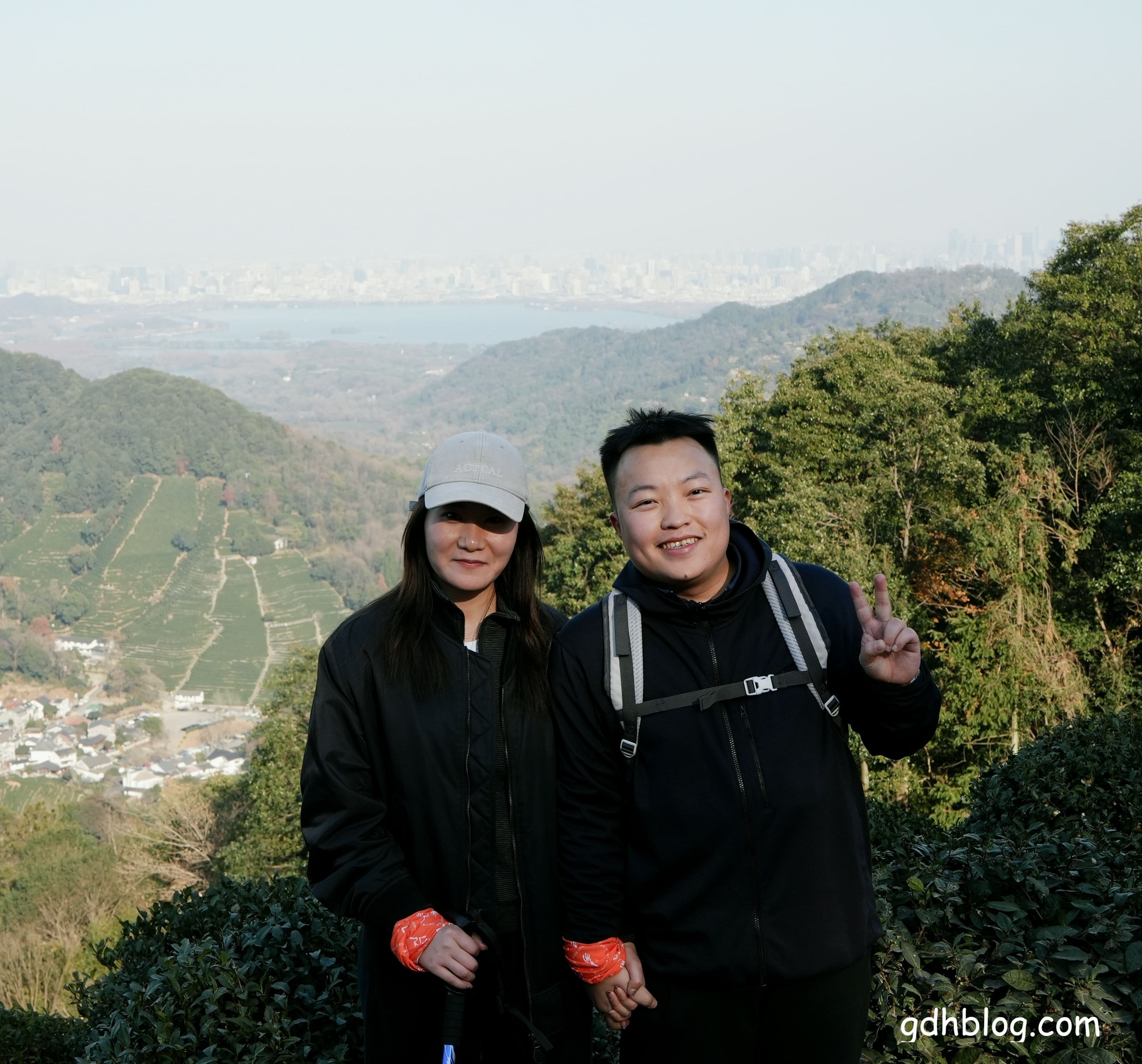Getting to Know the Destinations
- Faxisi Temple
One of the three famous temples on Tianzhusi Mountain in Hangzhou, known as the “Three Temples of Tianzu”. It is the latest of the three temples to be established, but still has over a thousand years of history. The upper (Faxisi), middle (Fajingsi), and lower (Fajuesi) Tianzu temples were all renovated and renamed by Emperor Qianlong. Faxisi is the largest of the three temples.
Faxisi Temple should be on the top list of famous temples in Hangzhou, along with Lingyin Temple. A local Hangzhou netizen commented that “Hangzhou locals usually go to Faxisi Temple, while Japanese and Korean tourists prefer Jingcisi Temple, and general tourists will go to Lingyin Temple. Faxisi may have a lower profile.” I’ve been to Lingyin Temple twice, and it is quite crowded with tourists, though the grounds are large enough to explore for a while. My impression of Faxisi Temple is that it feels more peaceful and comfortable, the size is just right (can be toured in about an hour), and it’s a great place for photography. I’ve also heard that during the New Year season, many people come here to pray for good luck in love, as the temple is said to be very auspicious for finding a partner.
- Shilileidan (Ten-Mile Gongs and Bells)
Also known as Langdang Ridge or Langdangling, the ancient name was Menbieling. It refers to the mountain range east of Longjing Village and northeast of Meijiawu Village on Tianzhusi Mountain. Colloquially, the entire mountain range from Wuyun Mountain in the south to Tianzhusi in the north is called “Langdang Ridge”. The ridge winds for about 10 kilometers, hence the name “Shili Langdang” or “Ten-Mile Gongs and Bells”.
The Langdang Ridge scenic area is primarily composed of limestone, which has naturally formed the peaks and valleys of its beautiful mountain landscape. It is the highest and longest mountain range in the West Lake area, with an average elevation over 200 meters, offering panoramic views. It is one of the West Lake mountain forests that is most popular with Hangzhou’s local residents and tourists. The ancient trails here have maintained their original paths and traditional paving.
This area is considered a great place for beginner hikers to get started, earning it the nickname of the “Beginner Hikers’ Village”.
Route and Preparation
- Route
Faxisi Temple → Longjing Village → Shilileidan → Three-Way Fork → Observation Pavilion → Zhenjie Temple → Yunqi Bamboo, completing a large loop of about 10 kilometers.
(Red dotted line)
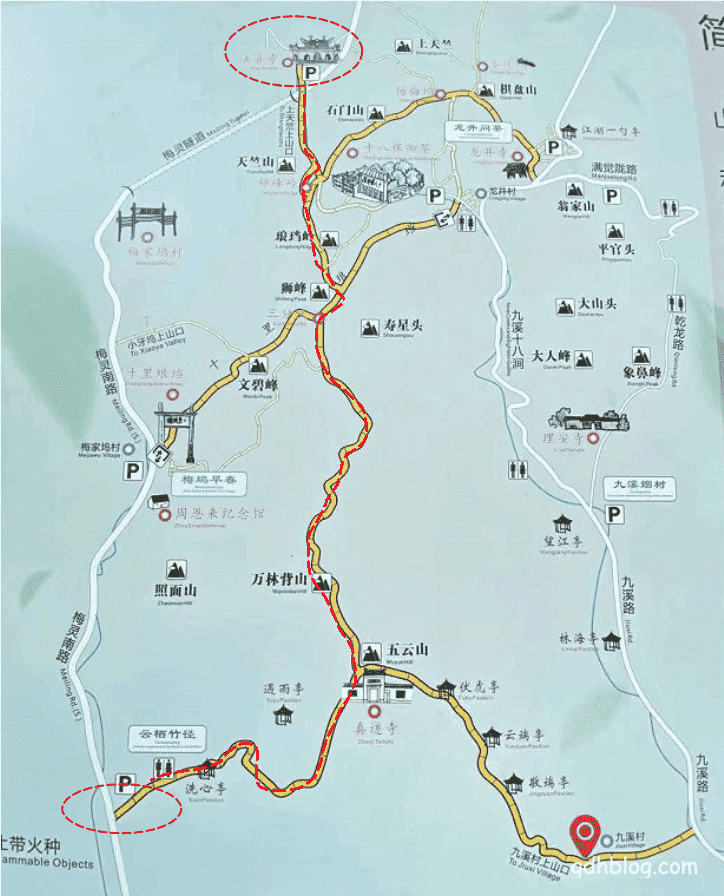
- Preparation
- Athletic attire (bring a windbreaker, as it can get cold on the way down)
- Backpack
- Hiking shoes (regular sneakers will also work)
- Snacks and supplies along the way: energy bars, snacks, bottled water
Itinerary
| Time | Plan |
|---|---|
| 08:00 - 12:00 | Go to Faxisi Temple (10 RMB entrance fee) |
| 12:00 - 13:00 | Have a vegetarian lunch at Faxisi Temple (5 RMB meal ticket), visit the temple |
| 13:00 - 17:30 | Hiking |
| 17:30 - 20:00 | Return trip |
Photo Sharing
Upon arriving at the entrance of Faxisi Temple, we purchased the entrance tickets (10 RMB per person). There was an option to pay via Alipay by scanning a QR code, so we didn’t need to go to the ticketing counter.
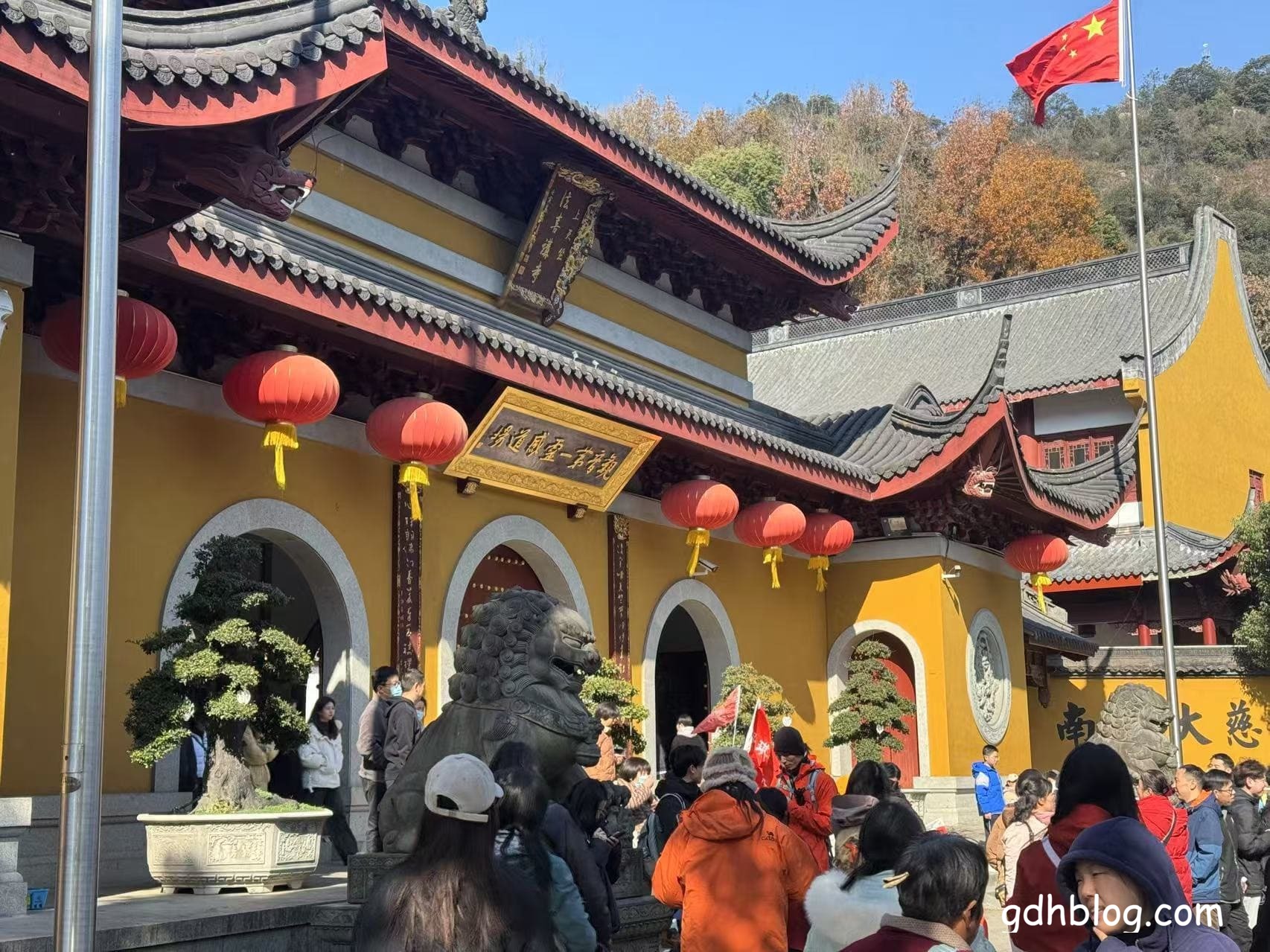
After entering through the main gate, the vegetarian meal dining area is located on the right-hand side. The meal tickets for the vegetarian lunch cost 5 RMB per person. The restrooms are also situated on the right side as you enter the temple grounds.
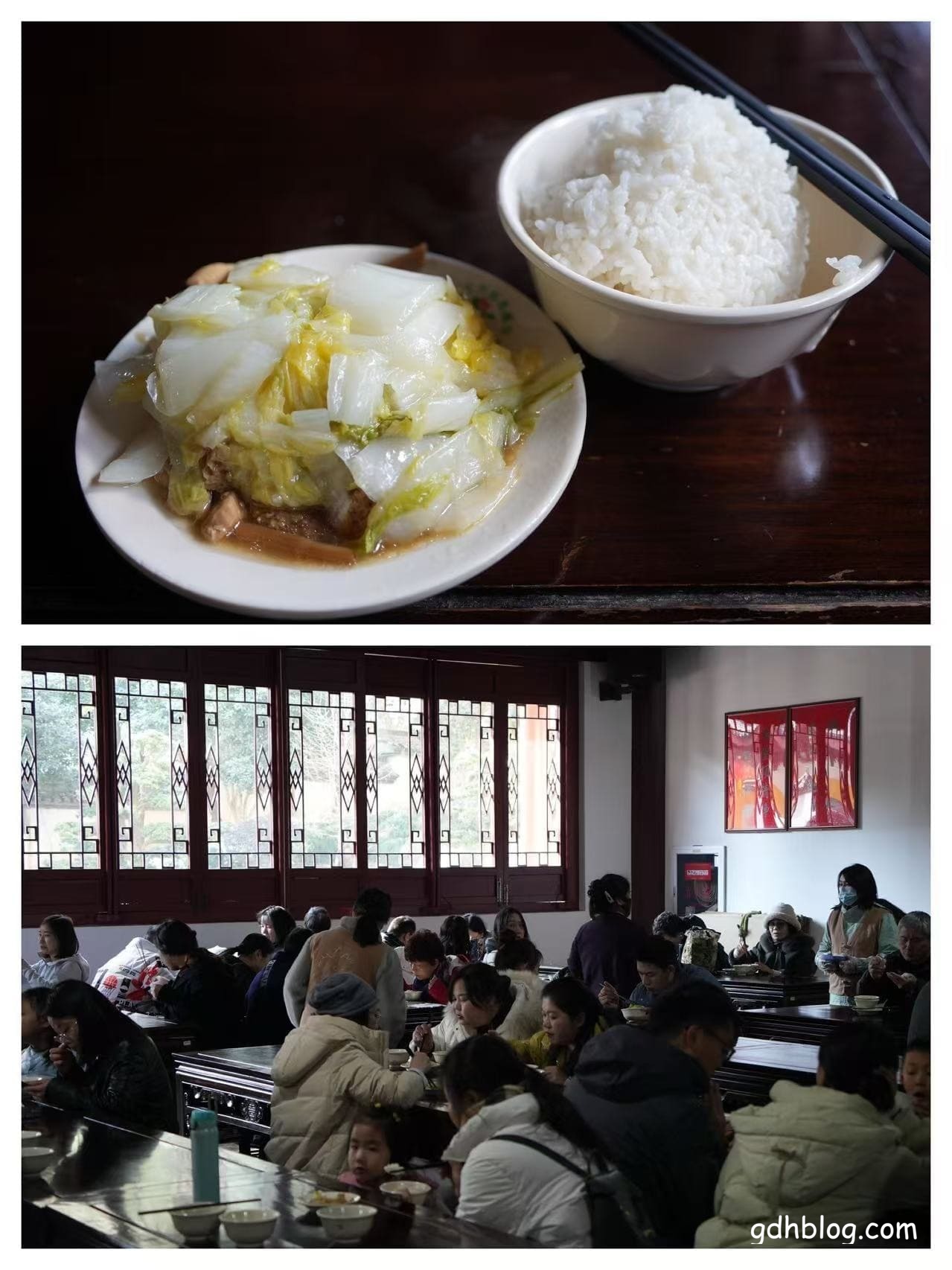
After finishing the vegetarian lunch, we strolled around the temple grounds. Not far from the dining hall, we came across stone tablets on the wall. We noticed that some characters like “安” (peace), “孝” (filial piety), and “子” (child) were particularly shiny and new-looking, likely from visitors touching them as a way of making wishes or praying.
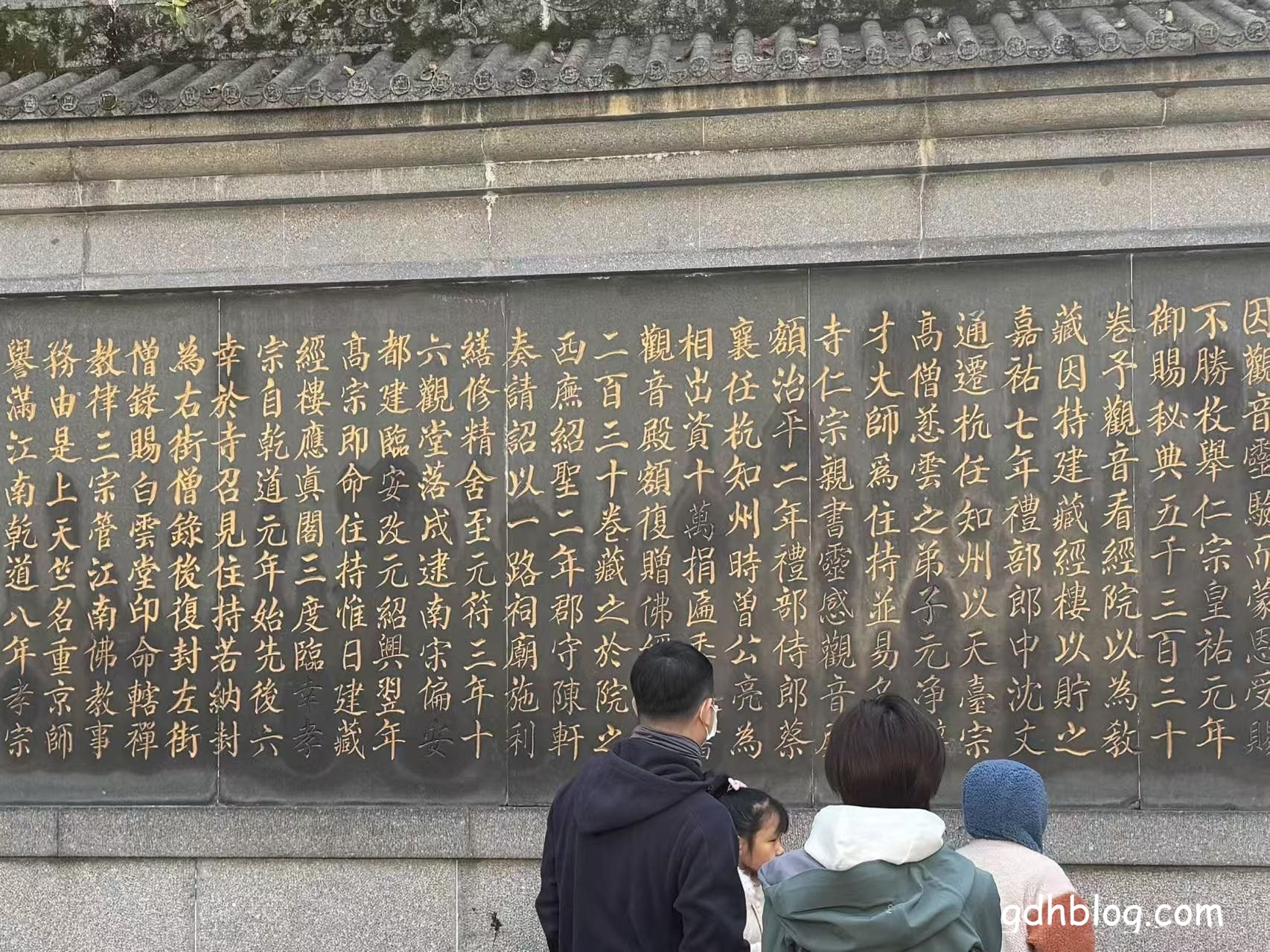
The Dharma Hall and the Sutra Repository

The windows

There are many plump white pigeons in the temple grounds.
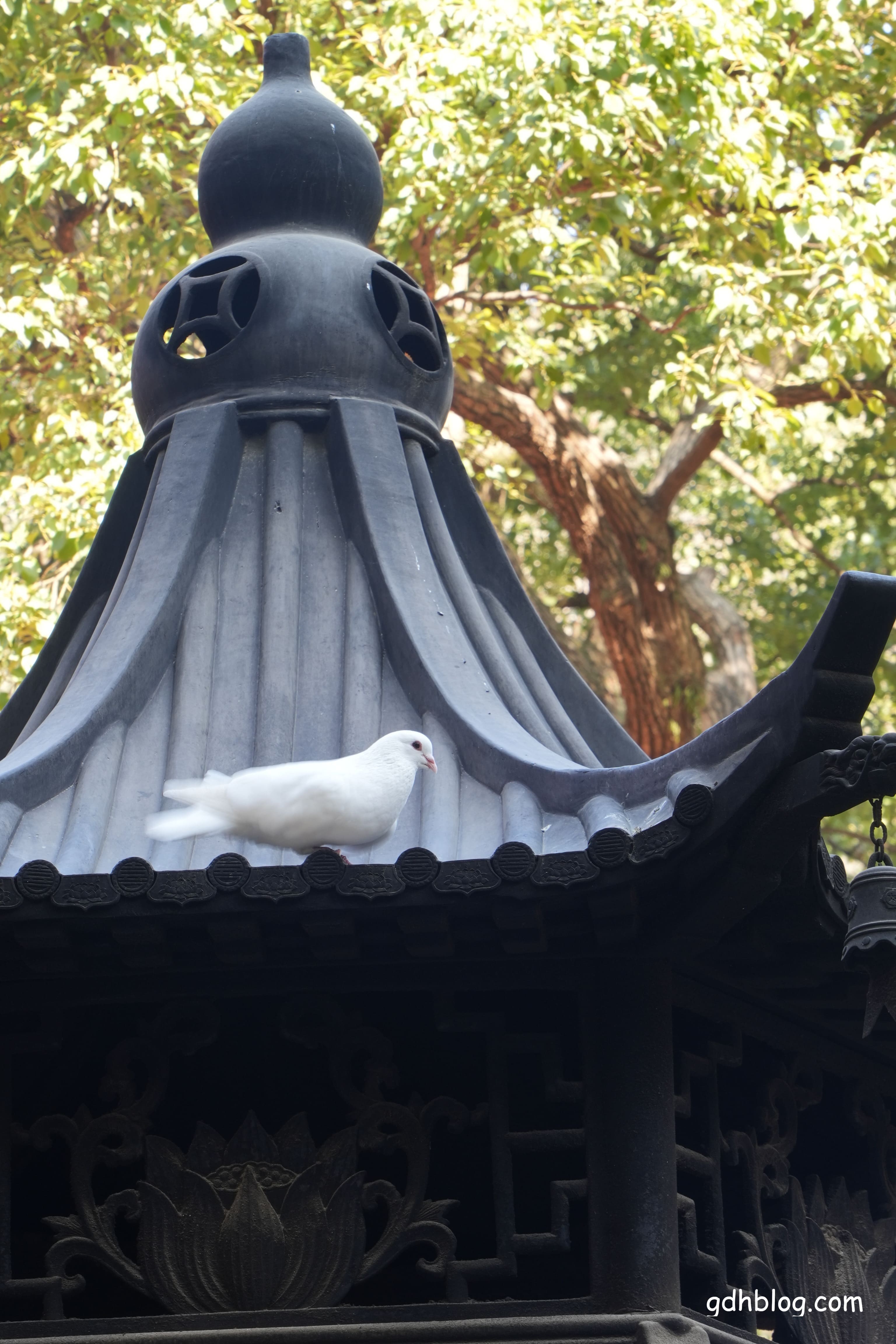
After touring the temple, we started climbing the mountain. The path was made of stone slabs, not too strenuous, and there were people along the way, so I felt a strong sense of safety.
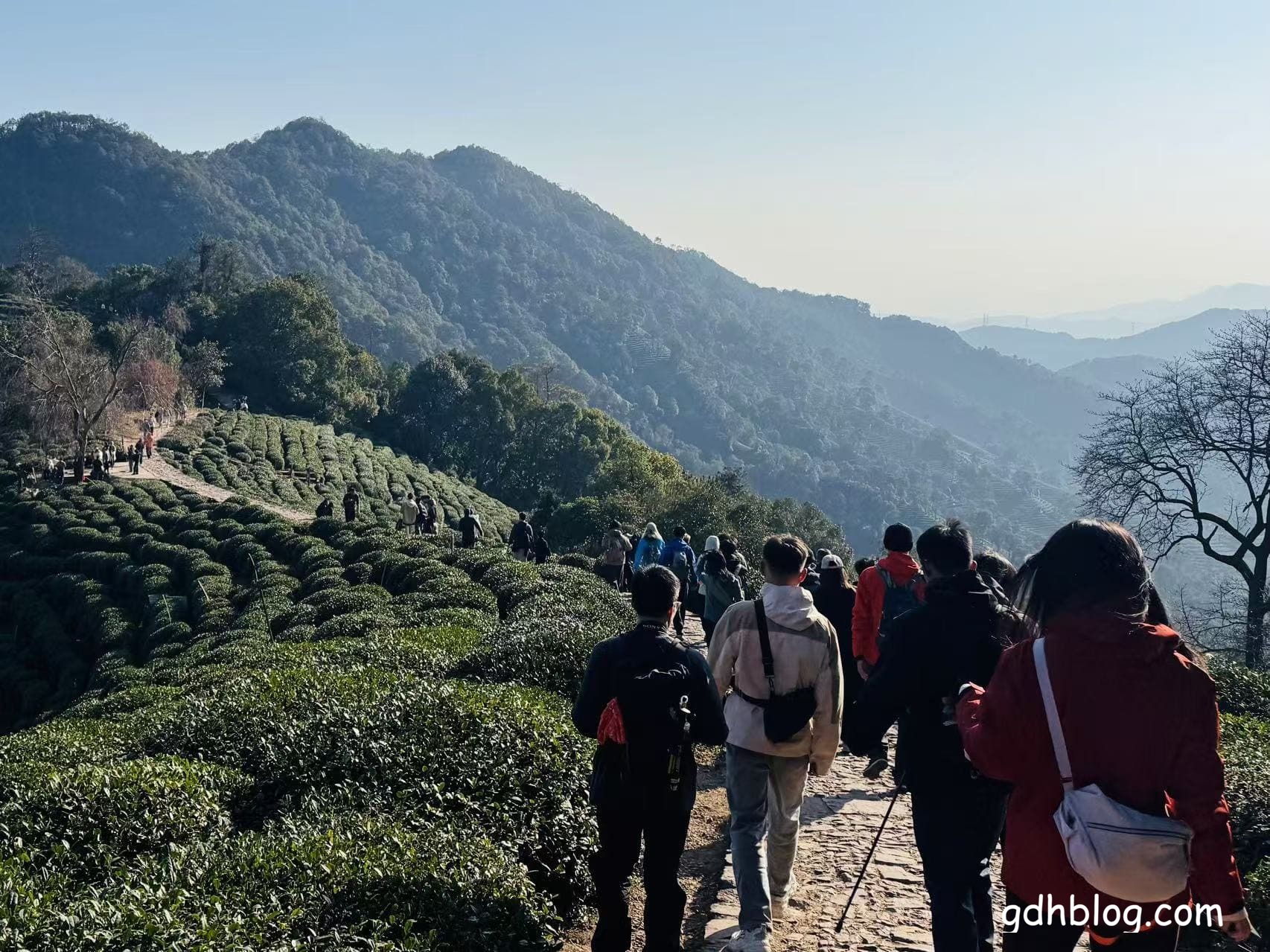
The scenery along the way was absolutely beautiful. On both sides of the mountain ridge were tea plantations, and in the distance we could see the Qiantang River.
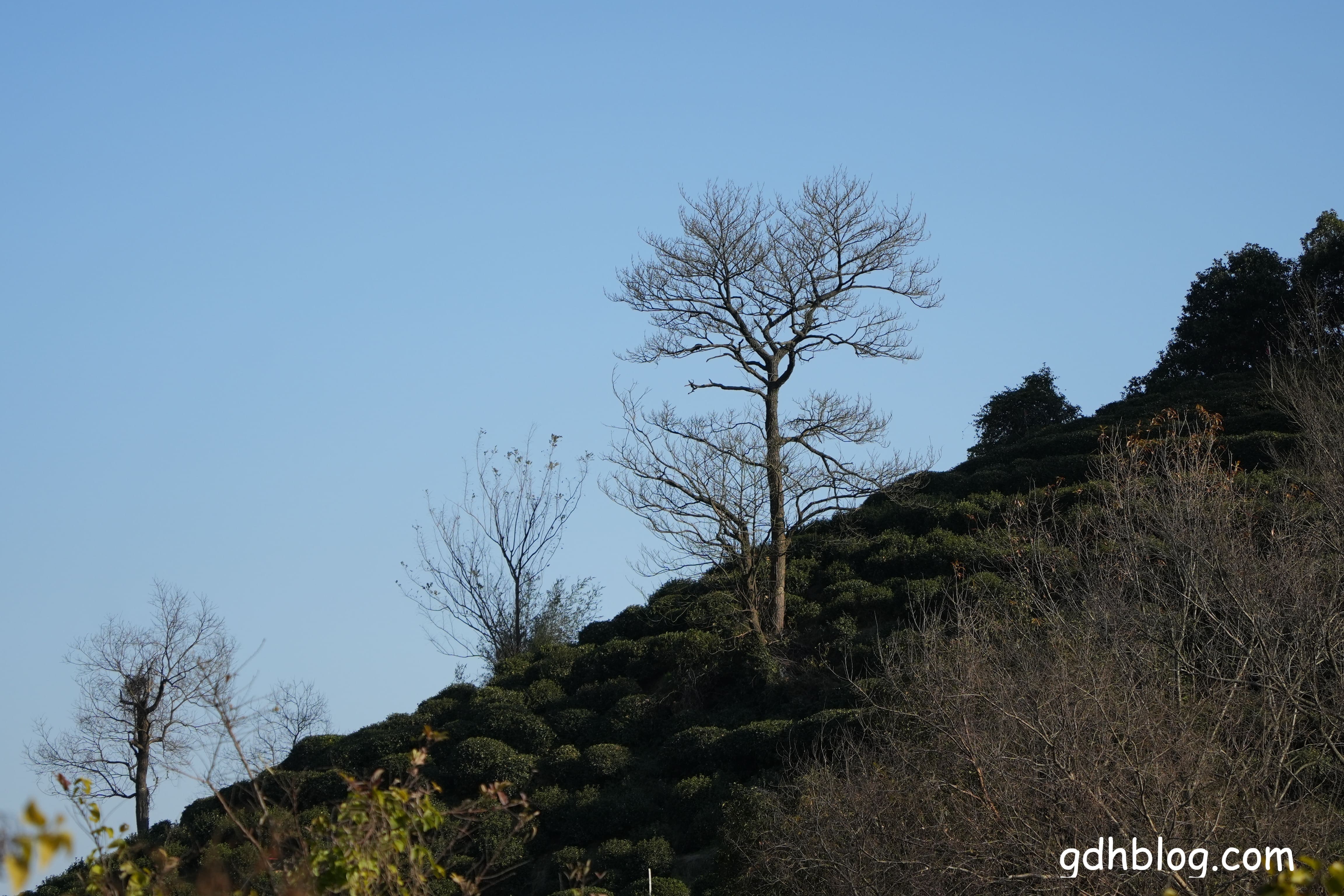
The continuous mountain ridges
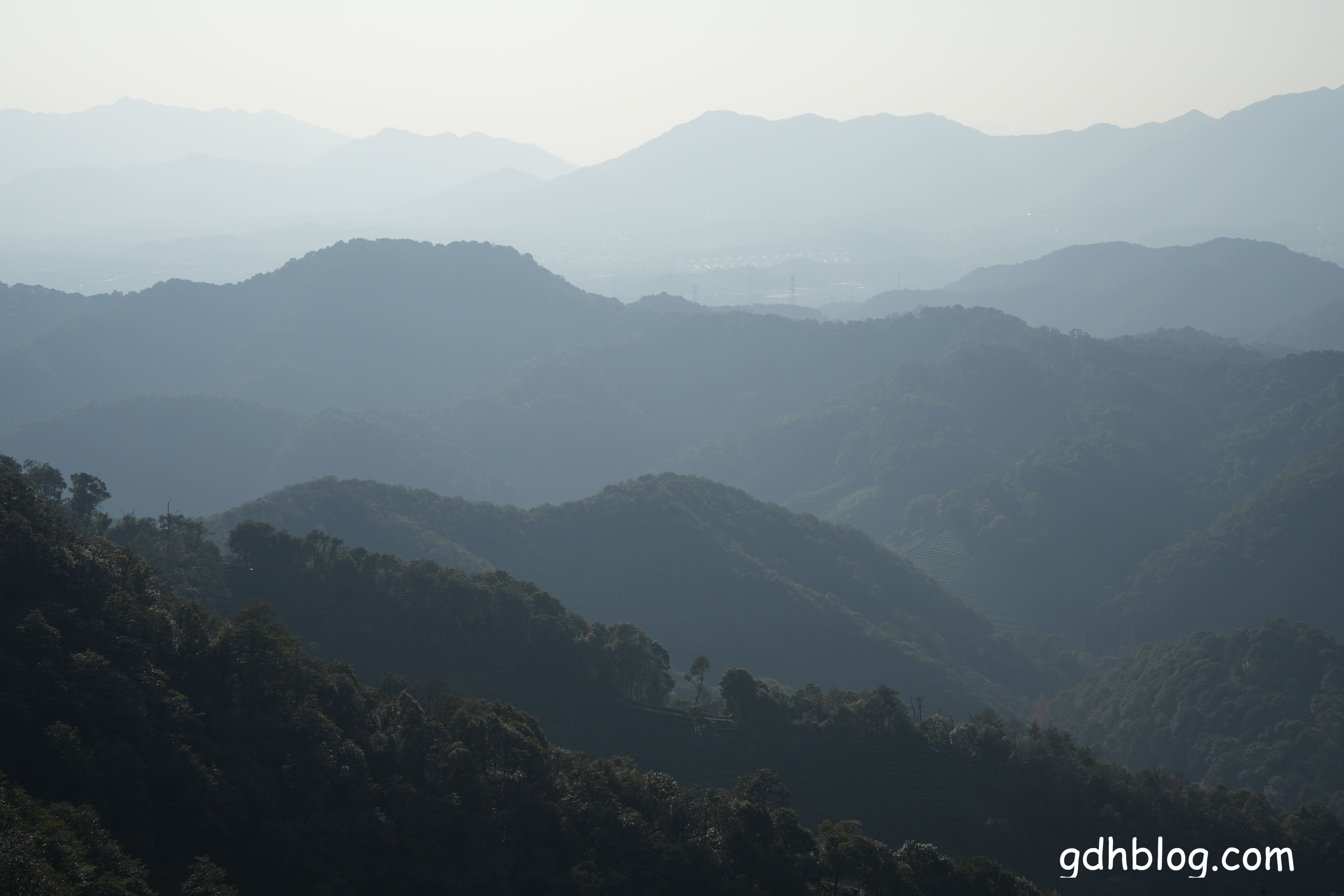
Maple leaves
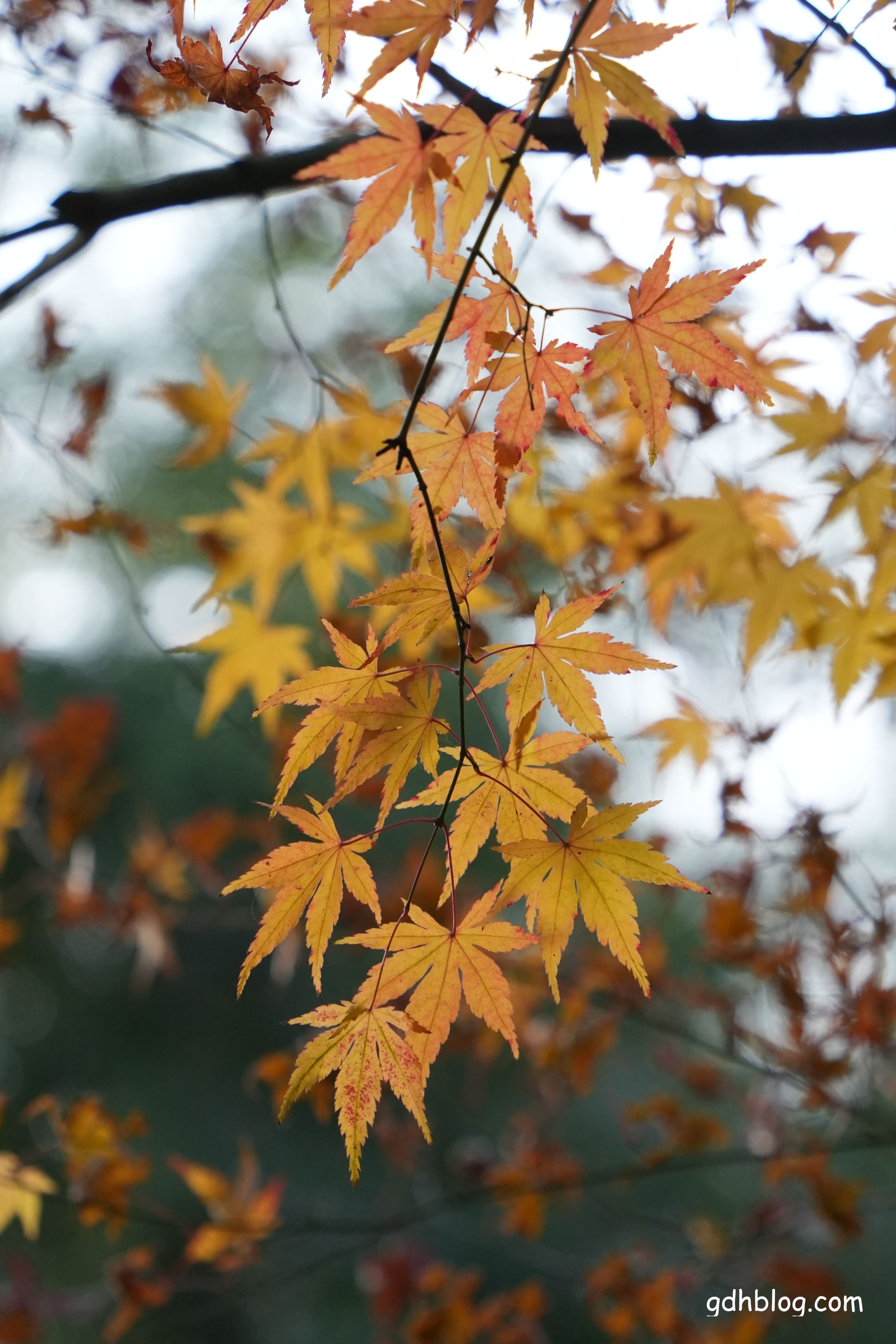
There is also a ginkgo tree here that is over a thousand years old.
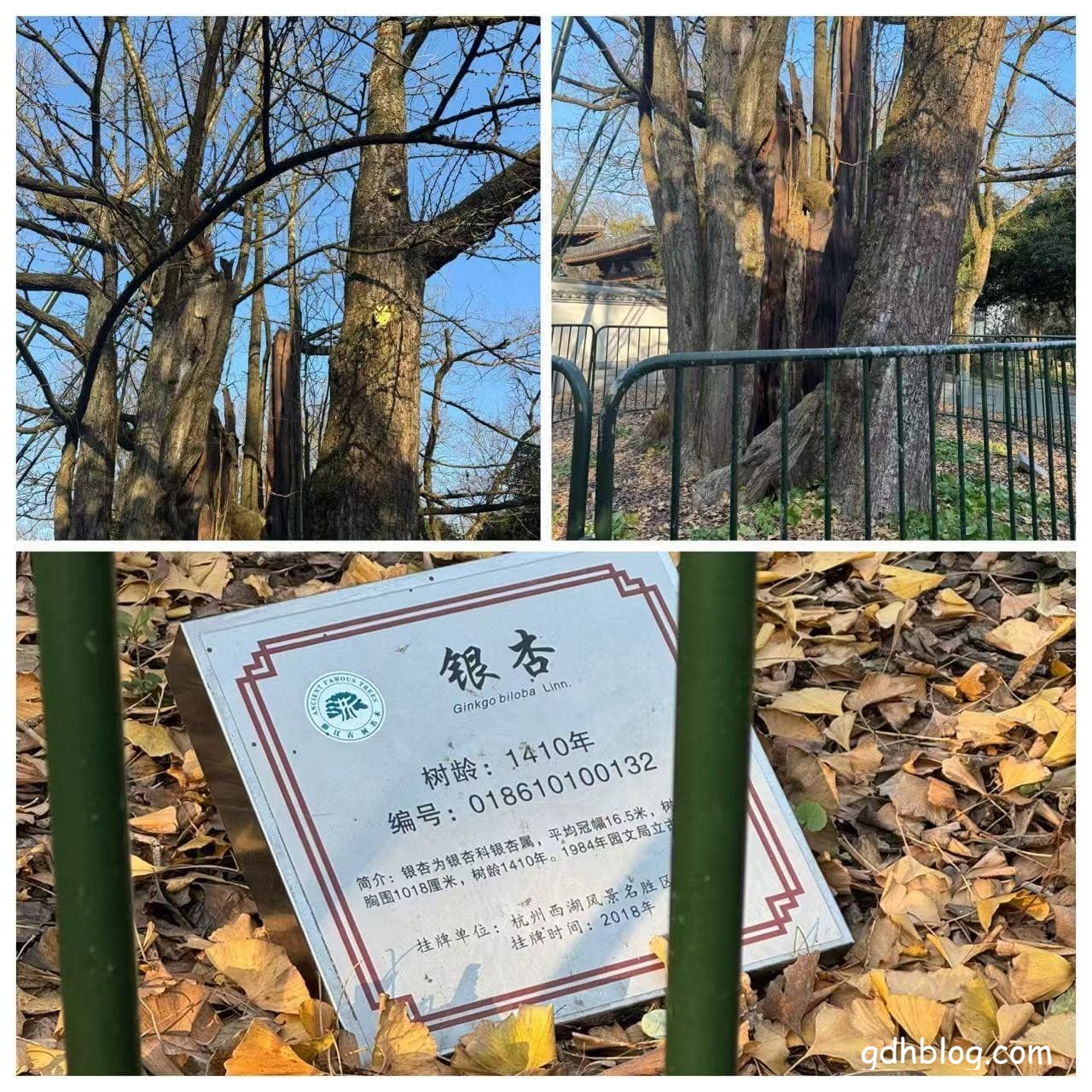
When we descended to the Yunxi Bamboo Path, we came across many elderly people burning paper offerings. Later, we learned that there is a Lotus Pool Master’s tomb in this area.
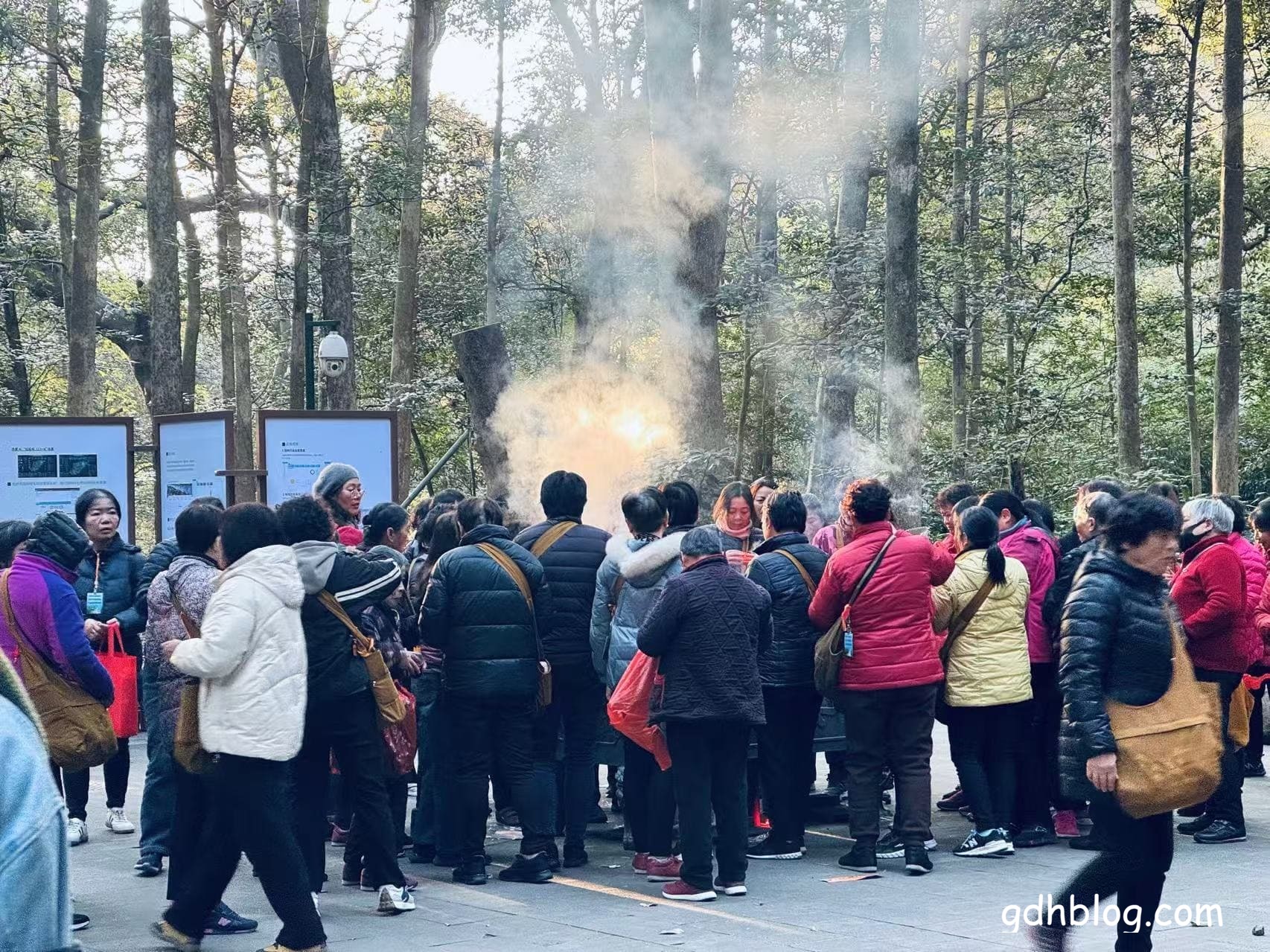
Finally, I’ll share a photo with my girlfriend (haha).
